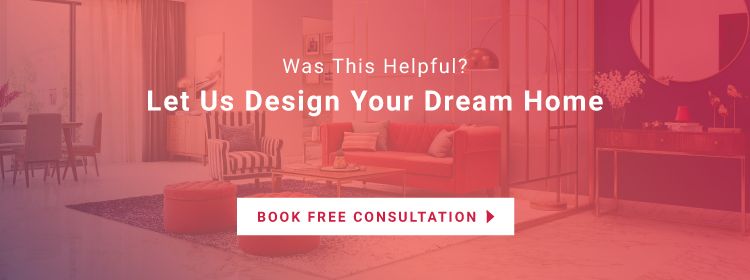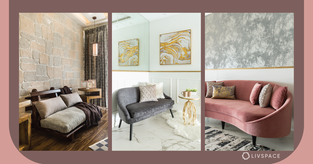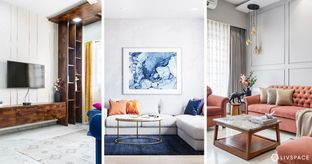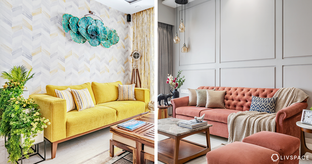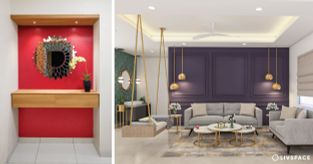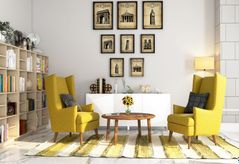In This Article
- #1: Layout: Is it open or closed?
- #2: Does your living room include your dining space too?
- #3: Do you want your living room to be a formal or informal space?
- #4: What kind of furniture should living rooms have?
- #5: What colour combination to pick for living rooms?
- #6: What kind of accent walls should your living room have?
- #7: How to design vastu-friendly living rooms?
Have you ever wondered what the reason for calling a space ‘living’ room could be? It probably has something to do with the fact we ‘live’ the most in this part of our home. Living rooms are the most important common area in any house, and naturally, take up a significant part of your interiors budget. Also, there are many types of living rooms; they are not all similar in shape, size, style or even form. Taking all these differences into account, you need to set up your living room in a way that suits your family’s lifestyle and the structure of your home.
Answers to any questions you may have about living rooms and interior design can be found below.
#1: Layout: Is it open or closed?
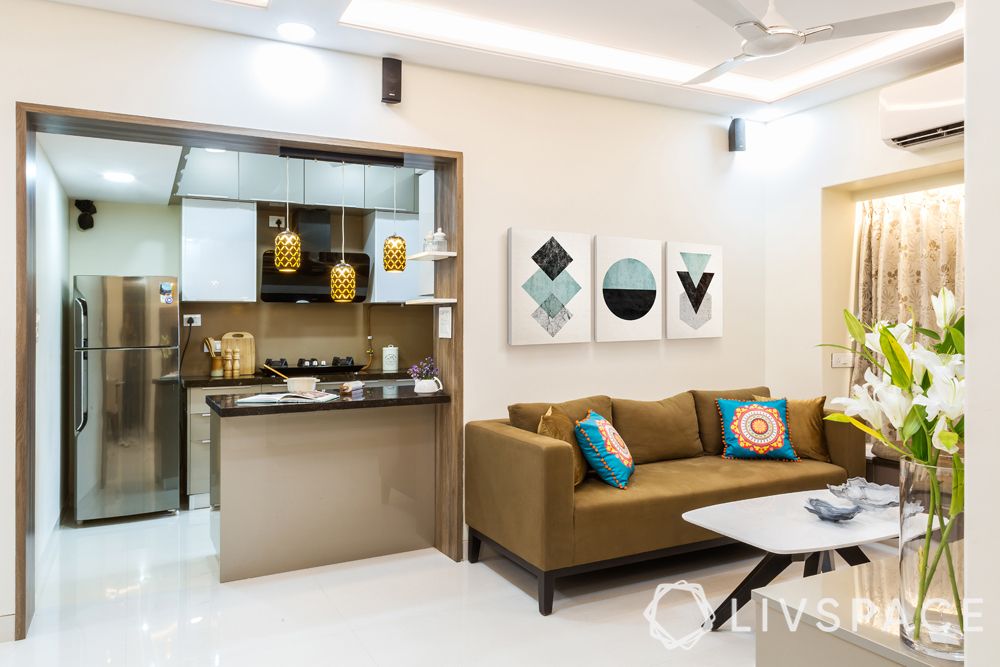

If your living room opens up directly into the kitchen, then you have an open layout. If your kitchen is a closed space separate from your living area, then you have a closed layout.
Open Layout Living Room
Such living rooms must have easy to clean surfaces because kitchens are open and the living area will require regular maintenance. Opt for darker colours and ensure that you don’t block any windows to facilitate ventilation to let out smoke and odours.
Closed Layout Living Room
You have the flexibility to choose from lighter colour palettes here. However, closed layouts make a space look cramped so do not stuff your living room with furniture. Leave plenty of space to move around and push everything to the walls to make space.
#2: Does your living room include your dining space too?
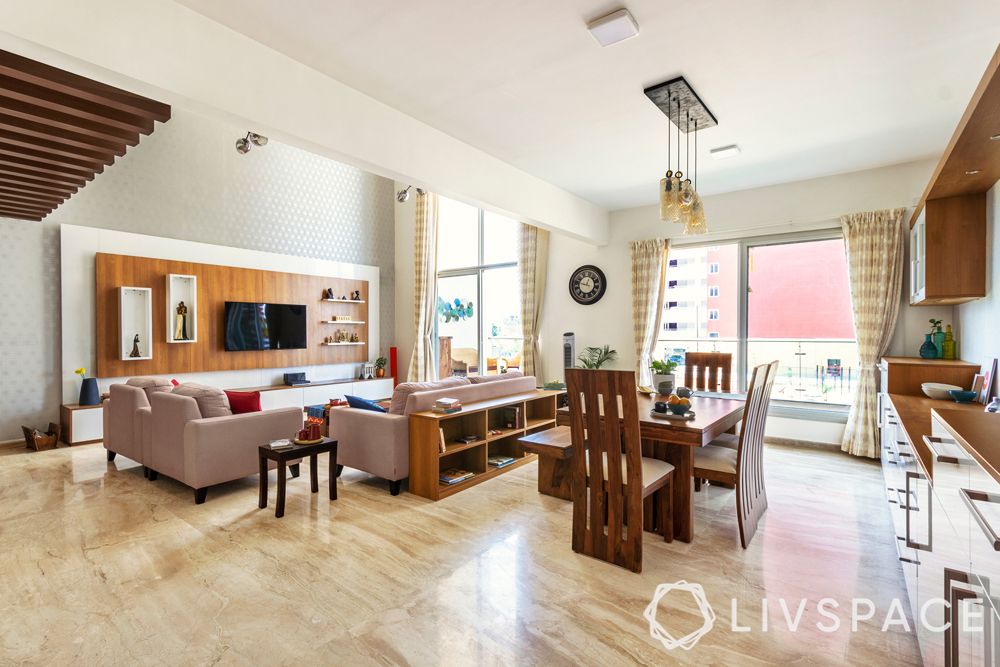
Typically, when we say living room we mean a space that includes the lounging and dining area. However, not every living room includes the dining space. Sometimes, the living area could just have seating. The dining room may be separate. This means that the living area has a closed layout and must be designed accordingly.
How to segregate space in your living-cum-dining room?

If the dining and living area is together, then you might want to segregate them as per function. There are many ways to do this. For a really large living room, you might consider a partition or divider. You can also opt for structural breaks like arches or steps. In a more compact space, you may install a mirror panel or use other means like area rugs.
For more ideas to divide living rooms, click here
#3: Do you want your living room to be a formal or informal space?
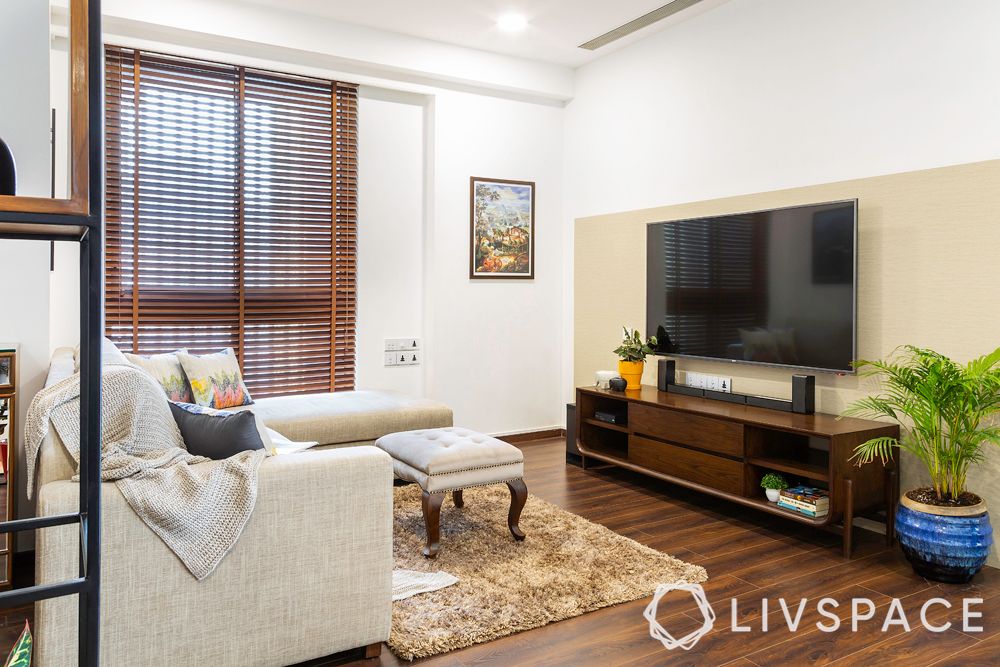
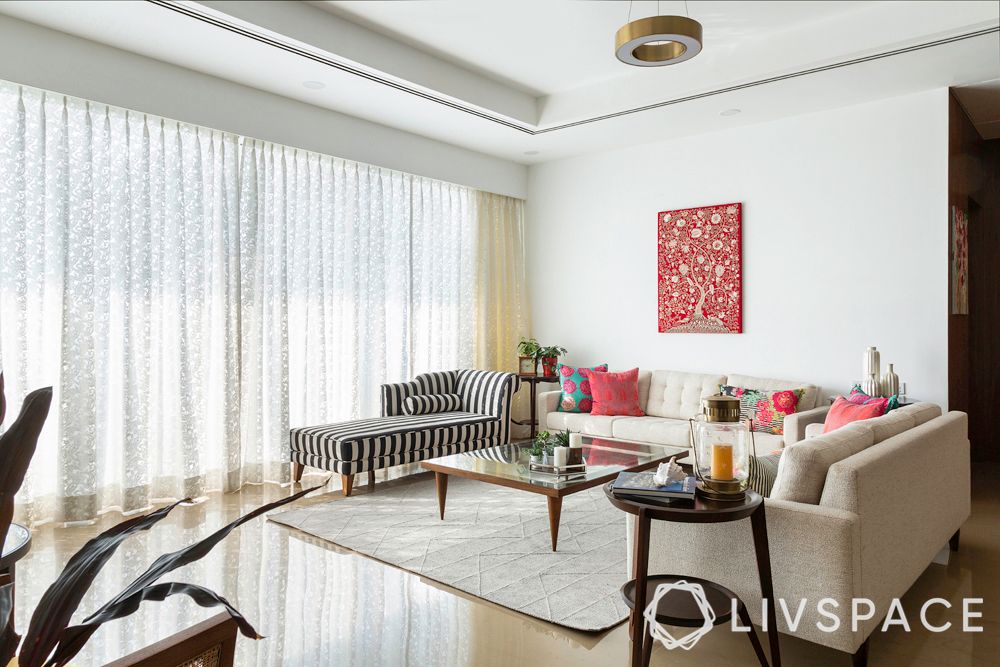
To get a suitable answer to this question, you might have to answer another question: what is the real function of your living room.
For some, the living area is a space to lounge and spend time with family. In which case, it is an informal setup that is more like a family room. Such living rooms will have more comfy seating options, large cushions, recliners and a TV unit so that the family can watch television together.
Others prefer to use their living room as a formal space to host guests. The seating arrangement is more formal for such spaces with L-shaped sofas to seat more people, coffee tables to break up the space and a display unit for decor items. Also, expect the wall to be dressed in pieces of art or curios.
It is also possible for a living room to serve both these purposes. And for that, it must have a mix of design elements from formal and informal settings.
What kind of flooring should your living room have?
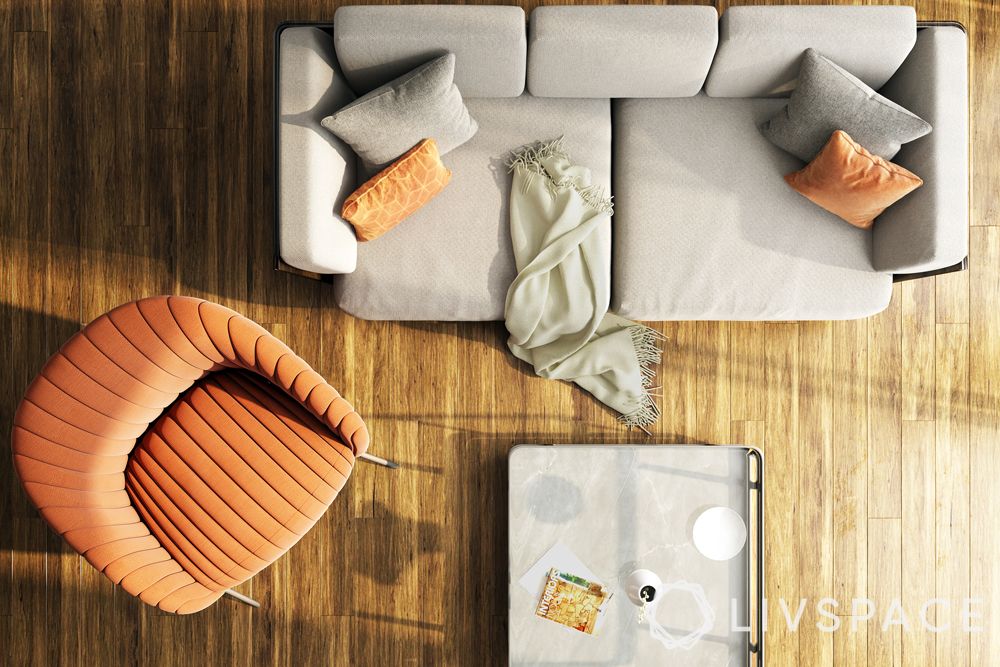
If your living room is informal, the flooring too should contribute to its cosiness. Opt for hardwood or laminate flooring that does not get too hot or cold. Warm flooring is ideal for informal living spaces.
For a formal living room, marble or granite flooring would be the traditional choice. However, if you don’t want to invest in natural stone flooring, try marble look-alike onyx tiles. For statement flooring, pick Moroccan tiles in vibrant colours and patterns.
For more flooring options, click here.
False ceiling designs for living room
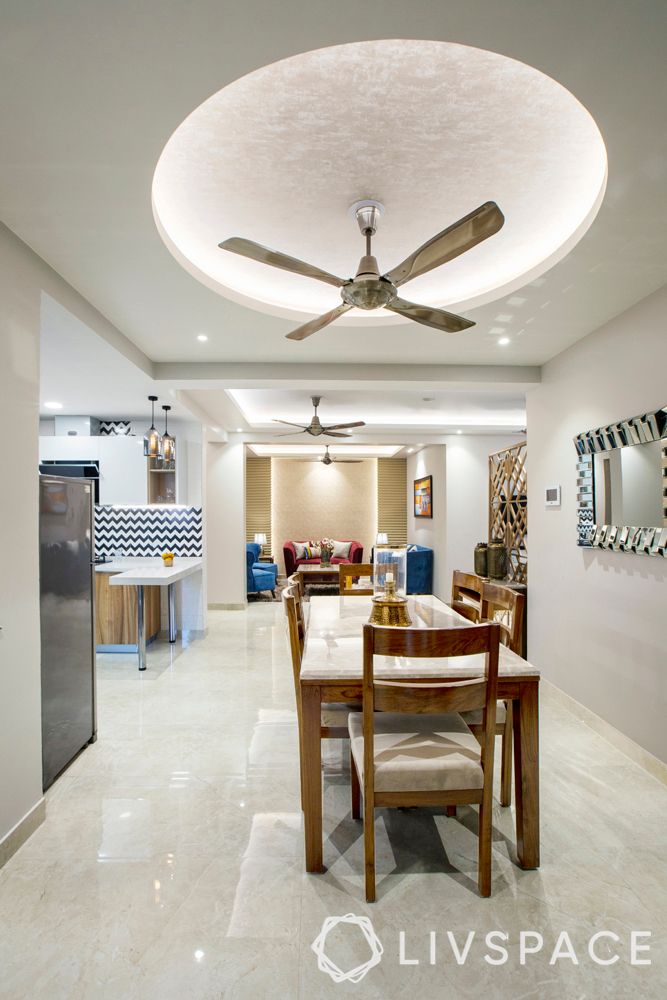
Just like flooring, the choice of ceiling design also depends on the type of living room you have: formal or informal. For a formal living room, you might want to try a fancy POP or gypsum false ceiling in different shapes. But for informal living rooms, wood rafters, with their warmth and structure, are a great way to dress up the ceiling. For a living room that is both for hosting and lounging, pick a peripheral false ceiling that lights up the space thoroughly without costing a bomb! In fact, for compact living areas or ones that have low ceilings, you can skip the false ceiling altogether.
If you need inspiration, check out the best false ceiling designs from #LivspaceHomes here.

#4: What kind of furniture should living rooms have?
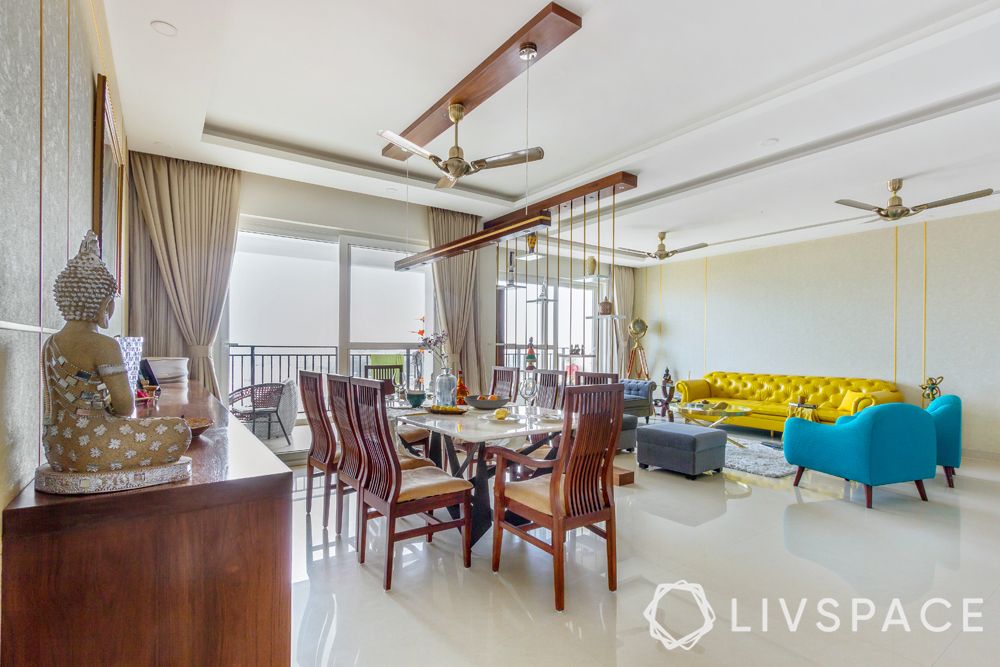
Seating
Every living room requires seating options, and the quintessential ‘sofa’ is often the most obvious choice. Alongside sofas, there are several other seating options like daybed, settees, ottomans etc. You can explore all the options here.
Tables
Among the many tables that are kept in a living room, the dining table is often the largest. Then comes the centre table that is kept in a lounging area. Over and above these, you can always have other tables like coffee tables, side tables and end tables.
Storage and Display
The TV or entertainment unit is a very classic feature of most Indian living rooms. You can pick from more than 50 of our best TV unit designs here. However, if your living area is strictly formal, you can skip it in favour of display units or shelves. Other storage units that we find in living rooms are consoles, bookshelves, crockery units and bar units.
#5: What colour combination to pick for living rooms?
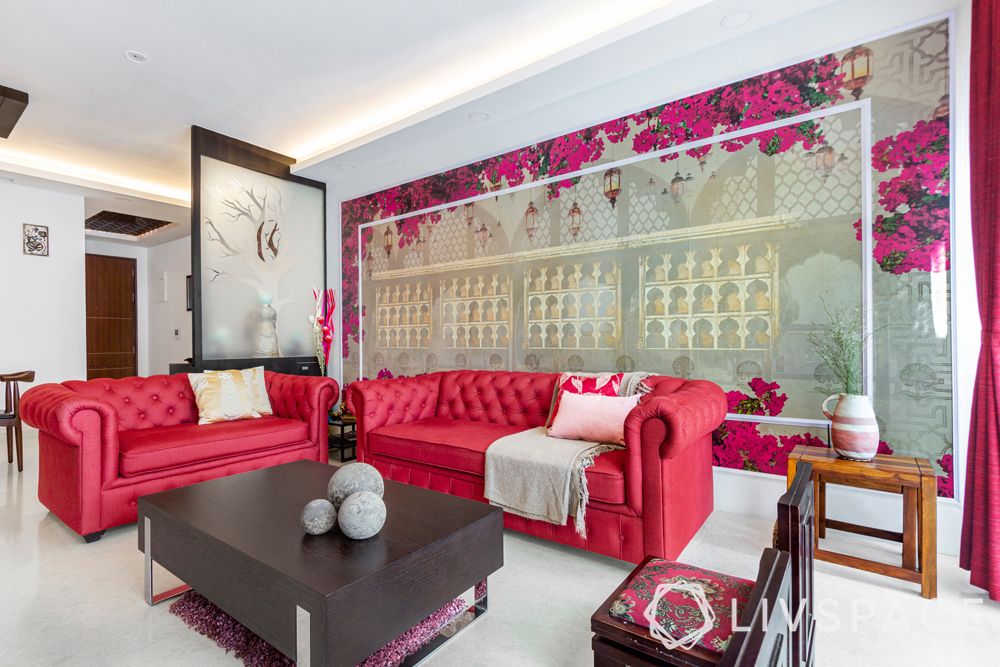
Colour has an instant impact on how a space affects you. And how you pair one colour with another makes all the difference. For indian living rooms, people typically choose from either warm or cool colours. Among warmer tones, reds, yellows, oranges as well as their shades are used. Cool colours include blues, greens and violets. Also, pastels and neutrals can be used by themselves or in conjunction with a brighter pop colour. While white walls are very popular, you will rarely see an Indian living room totally devoid of colour.
Get more details for colours suitable for living rooms here and learn how to combine them here.
#6: What kind of accent walls should your living room have?
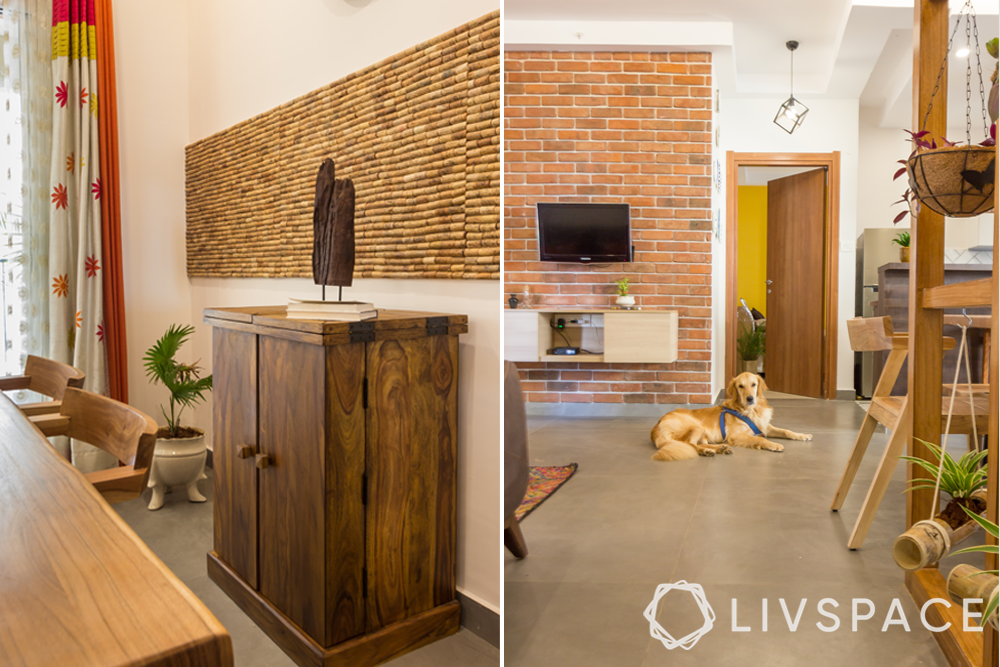
An accent wall is the one that stands out within a room or makes a statement. As living rooms are meant to host guests, the accent wall here takes on special importance. There are many different ways to create an accent wall; you can use a bold colour or texture paint. Some accent walls are created using cladding while others require moulding or trims. Wallpapers too are an easy way to make a statement.
Learn how you can turn bare walls into accent walls here.
#7: How to design vastu-friendly living rooms?
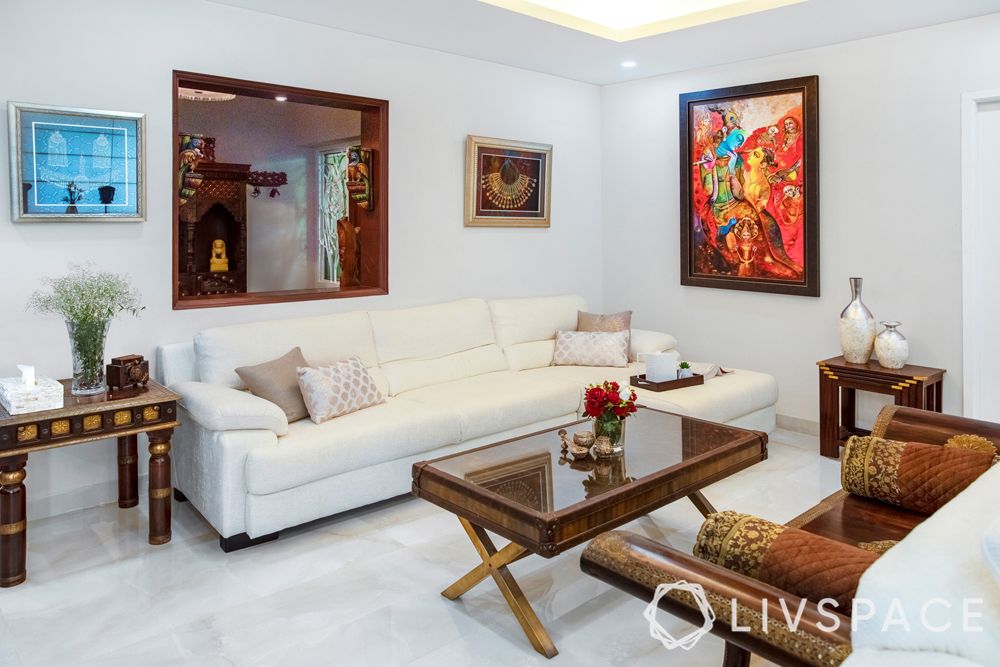
Vastu is the science of balancing the energy of your home in the right way. And the vastu of the living room is very crucial as it is where you spend most of your time as a family. Start off by ensuring that your living area gets plenty of natural light. Also, have a source of running water in your living area. Don’t clog the corners in this space as this traps negative energy. Plants are a great way of ensuring good energy in your living room.
You can also check out the colours for living room designs that are approved by vastu here.
Vastu is the science of balancing the energy of your home in the right way. And the vastu of the living room is very crucial as it is where you spend most of your time as a family. Start off by ensuring that your living area gets plenty of natural light. Also, have a source of running water in your living area. Don’t clog the corners in this space as this traps negative energy. Plants are a great way of ensuring good energy in your living room.
You can also check out the colours for living rooms that are approved by vastu here.
More living room design ideas here:
We love hearing from you! Write to us at editor@livspace.com
